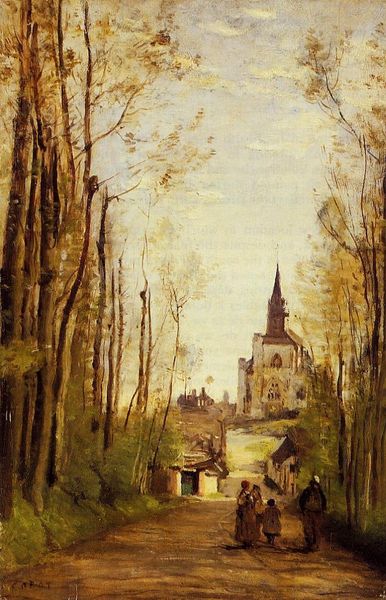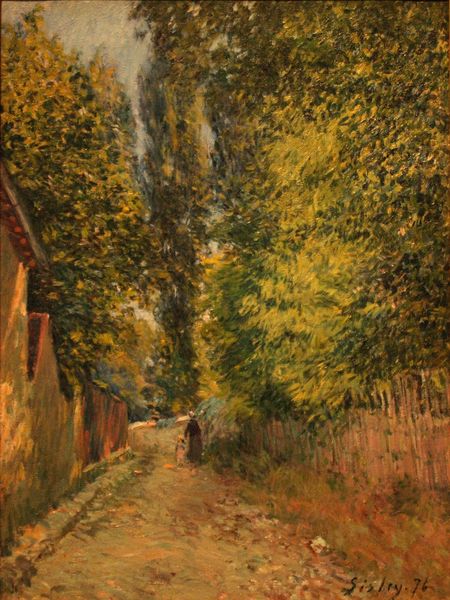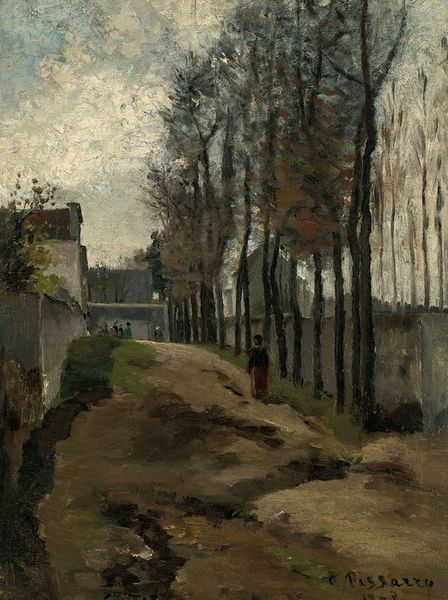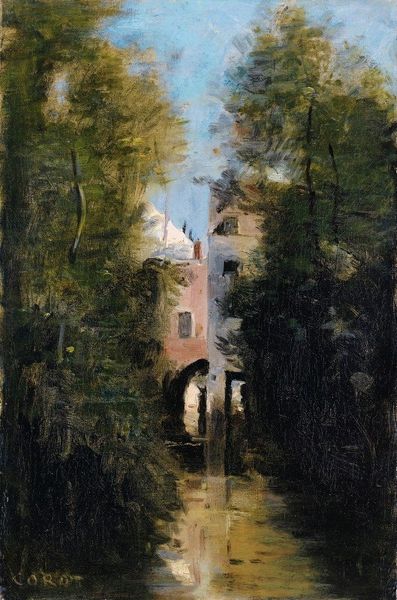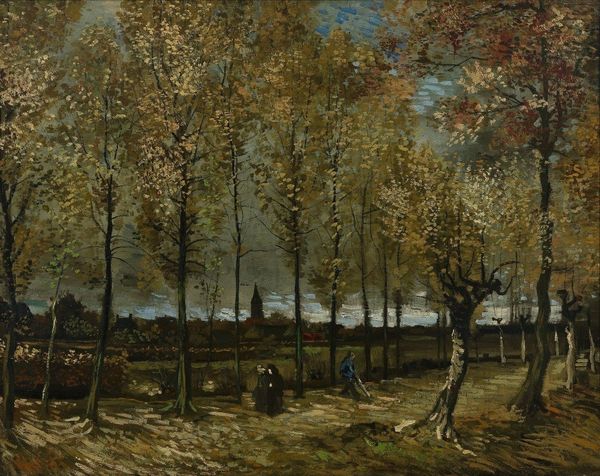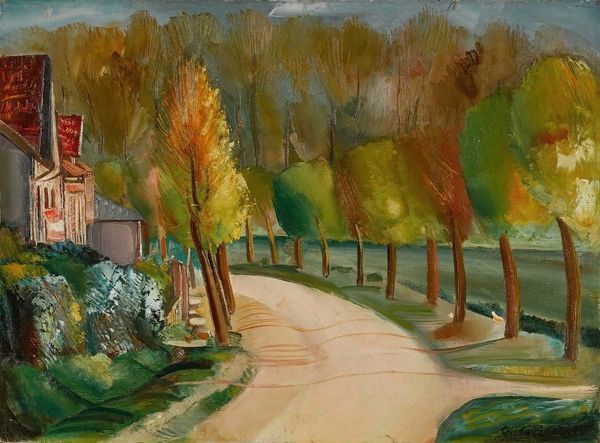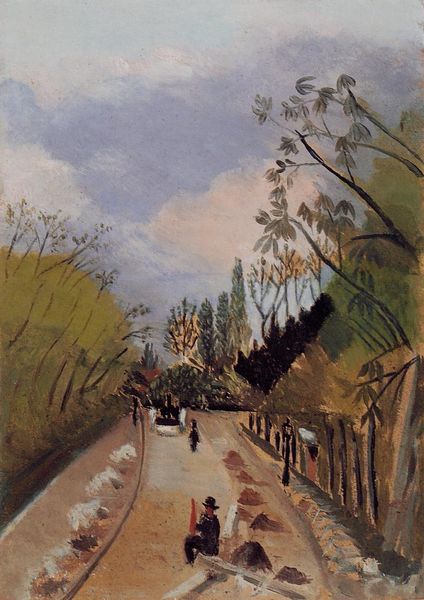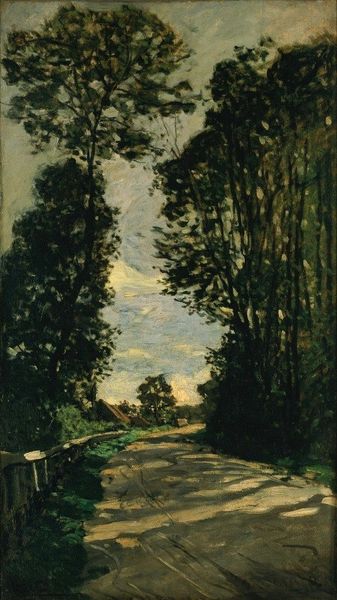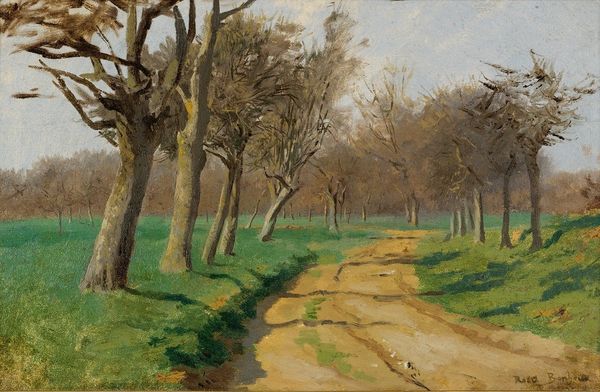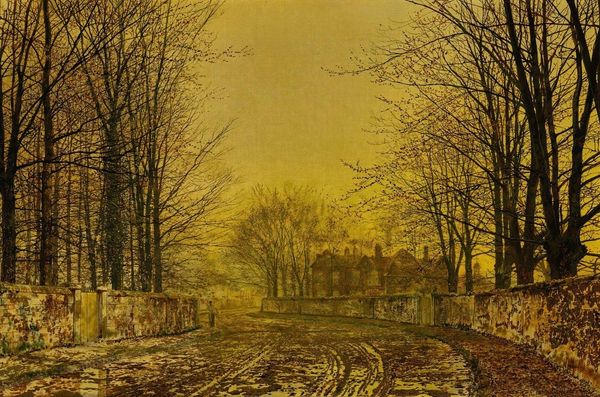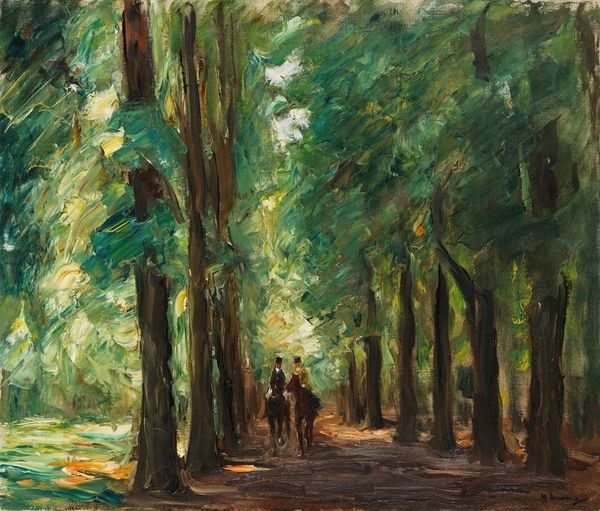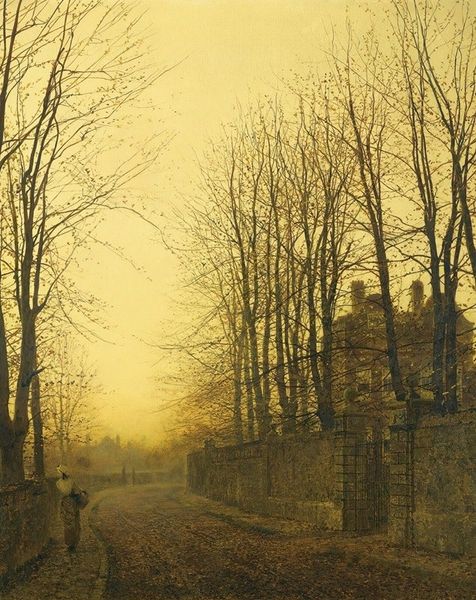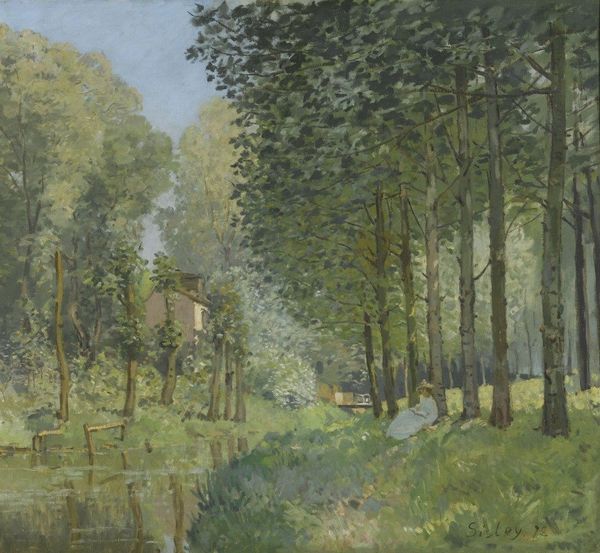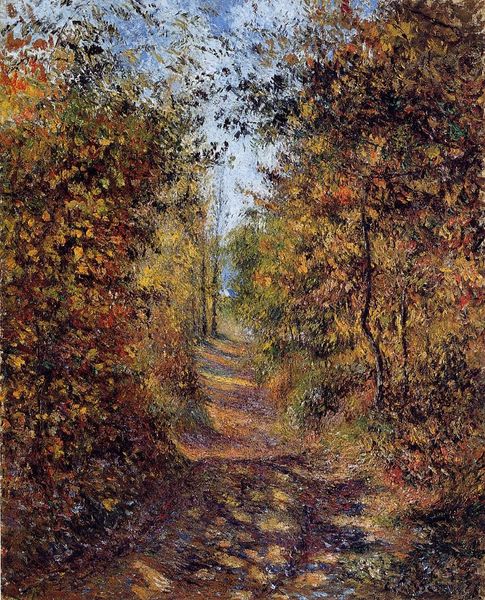
painting, plein-air, oil-paint
painting
impressionism
plein-air
oil-paint
landscape
impressionist landscape
oil painting
post-impressionism
Copyright: Public Domain: Artvee
Vincent van Gogh created "Avenue of Poplars in Autumn" using oil paint, a medium closely tied to the rise of industrial capitalism. Compared to earlier painting methods like fresco or tempera, oils offered an unmatched blend of convenience and expressive possibility. Ground pigments are suspended in linseed or walnut oil which are readily available due to globalized trade networks of the time. This allowed artists to capture fleeting atmospheric effects, like the light filtering through the trees. You can almost feel the chill in the air. The materiality of the paint itself contributes significantly to the artwork’s impact; the texture and viscosity of the oil paint allowed him to create an impasto surface that captures the rough texture of the bark on the trees and the unpaved ground, and allowed him to convey emotion by using vigorous brushstrokes. Ultimately, a painting like this reminds us that the history of art is entwined with the history of materials, labor, and commerce. Van Gogh transformed ordinary materials into something truly extraordinary, making his mark on the world.
Comments
No comments
Be the first to comment and join the conversation on the ultimate creative platform.
